See also

Stars outside of the Solar System have been featured as settings in works of fiction since at least the 1600s.
Among the earliest depictions of stars as locations that can be visited is Bernard Le Bovier de Fontenelle's 1686 work Entretiens sur la pluralité des mondes ( Conversations on the Plurality of Worlds ). [1] The centuries that followed saw further such portrayals in Emanuel Swedenborg's 1758 work De Telluribus in Mundo Nostro Solari (Concerning the Earths in Our Solar System), C. I. Defontenay's 1854 novel Star ou Psi de Cassiopée (Star: Psi Cassiopeia), and Camille Flammarion's 1887 novel Lumen , but they remained rare throughout this time period. [1] [2] The early 1900s saw a few further interstellar voyages with Robert William Cole's 1900 novel The Struggle for Empire: A Story of the Year 2236 , Jean Delaire 's 1904 novel Around a Distant Star , and William Shuler Harris 's 1905 novel Life in a Thousand Worlds before the concept became popular in the pulp era of science fiction. [1] [2]
Stars, and their positions in the night sky as seen from Earth, have long been regarded as holding a particular significance to humans. Constellations have been integrated into various mythologies, and the pseudoscience of astrology posits that the positions of the stars can be used to predict the future. [1] [2] [3] Astrology very rarely features in science fiction (other than as a subject of satire), Piers Anthony's 1969 novel Macroscope being one of the few exceptions. [3] [4] Observations of stars as literal objects, points of light in the sky, nevertheless play important roles in several stories. [3] In Isaac Asimov's 1941 short story "Nightfall", the first sight of a star-filled night sky, from a planet that is otherwise in daylight from at least one of its many suns for millennia at a time, drives people to madness. [1] [3] [5] [6] The opposite occurrence, of the stars disappearing from view, appears in Arthur C. Clarke's 1953 short story "The Nine Billion Names of God" and heralds the end of the universe. [3] [5]
Stars, although there is a certain poetical reference to them in much science fiction, do not actually feature in much depth in most SF stories. There are a couple of notable exceptions. [...] However, in the main, the stars themselves remain relatively untouched in the pages of SF, and exist simply as a means of providing light and warmth to planets they we may wish to visit or colonize.
George Mann,The Mammoth Encyclopedia of Science Fiction, "Stars" entry [6]
For the most part, stars in fiction vary only in size and colour. Exceptions to this are rare and appear comparatively lately in the history of science fiction. [2] A toroidal star is featured in Donald Malcolm's 1964 short story "Beyond the Reach of Storms". [1] [2] Sentient stars are depicted in Olaf Stapledon's 1937 novel Star Maker among others. [2] [3] [7] Some stories including Bob Shaw's 1975 novel Orbitsville depict stars being enclosed by Dyson spheres. [3]
Neutron stars, extremely dense remnants of stars that have undergone supernova events, appear in several works of fiction. [2] [5] [8] These objects are characterized by very strong gravitational fields yet comparatively small sizes on the order of a few kilometers or miles, resulting in extreme tidal forces in their proximity. [5] [8] [9] [10] In Larry Niven's 1966 short story "Neutron Star", a spacefarer is thus imperiled when the spacecraft approaches such a star too closely and the difference in gravitational pull between the near and far end threatens to rip it apart. [8] [9] [10] In Gregory Benford's 1978 novel The Stars in Shroud , a neutron star is used for gravity assist maneuvers. [8] [10] Neutron stars are depicted as harbouring life on the surface and interior, respectively, in Robert L. Forward's 1980 novel Dragon's Egg and Stephen Baxter's 1993 novel Flux . [3] [5] Neutron star mergers release enormous amounts of radiation that could cause extinction events at interstellar distances; such an event devastates Earth in Greg Egan's 1997 novel Diaspora , and the anticipation thereof is portrayed in Baxter's 2000 novel Manifold: Space and the 2005–2006 television series Threshold . [8]
Real stars make occasional appearances in science fiction, sometimes with planetary systems. [3] [11] A 2024 article in the Journal of Science Communication analysed a sample of 142 fictional exoplanets, nearly a third of which described as orbiting real stars, and found "an absence of influence of whether or not the planet setting is in a real star system on other worldbuilding characteristics". [12]
The Alpha Centauri system is the closest star system to Earth—with Proxima Centauri being the closest of the system's stars—which has given it a special position in science fiction literature. Several stories of the first interstellar journeys have featured it as the intended destination. Among the earliest examples are the 1931 short story "Across the Void" by Leslie F. Stone and the 1935 short story "Proxima Centauri" by Murray Leinster. [2] [3] The spacecraft in the latter reaches its destination in less than a decade but has the capacity to function as a generation starship if needed; the use of an actual generation starship headed for the system was later depicted in the 1944 novel Far Centaurus by A. E. van Vogt, [13] [14] and the 1997 novel Alpha Centauri by William Barton and Michael Capobianco portrays such a mission being endangered by terrorists. [2] [15] Conversely, Liu Cixin's 2006 novel The Three-Body Problem depicts aliens from Alpha Centauri coming to Earth. [3]
The Tau Ceti system is also a common setting in science fiction. [16] [17] James Nicoll, writing for Tor.com , attributes this to a confluence of factors that make it the nearest star (at a distance of approximately 12 light-years) that could plausibly harbour habitable planets, including having a favourable brightness and being a solitary rather than multiple star. [17] In 2015, Andrew Liptak interviewed several authors about why they used Tau Ceti for their stories; in addition to the star's relative proximity to Earth, Ursula K. Le Guin (who wrote The Dispossessed , 1974) and Larry Niven ( The Legacy of Heorot , 1987, with Jerry Pournelle and Steven Barnes) cited the star's similarity to the Sun, while Kim Stanley Robinson ( Aurora , 2015) pointed to the recent discovery of several exoplanets around Tau Ceti. [16]


Mars, the fourth planet from the Sun, has appeared as a setting in works of fiction since at least the mid-1600s. Trends in the planet's portrayal have largely been influenced by advances in planetary science. It became the most popular celestial object in fiction in the late 1800s, when it became clear that there was no life on the Moon. The predominant genre depicting Mars at the time was utopian fiction. Around the same time, the mistaken belief that there are canals on Mars emerged and made its way into fiction, popularized by Percival Lowell's speculations of an ancient civilization having constructed them. The War of the Worlds, H. G. Wells's novel about an alien invasion of Earth by sinister Martians, was published in 1897 and went on to have a major influence on the science fiction genre.

An overwhelming majority of fiction is set on or features the Earth, as the only planet home to humans. This also holds true of science fiction, despite perceptions to the contrary. Works that focus specifically on Earth may do so holistically, treating the planet as one semi-biological entity. Counterfactual depictions of the shape of the Earth, be it flat or hollow, are occasionally featured. A personified, living Earth appears in a handful of works. In works set in the far future, Earth can be a center of space-faring human civilization, or just one of many inhabited planets of a galactic empire, and sometimes destroyed by ecological disaster or nuclear war or otherwise forgotten or lost.
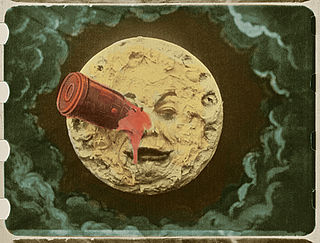
The Moon has appeared in fiction as a setting since at least classical antiquity. Throughout most of literary history, a significant portion of works depicting lunar voyages has been satirical in nature. From the late 1800s onwards, science fiction has successively focused largely on the themes of life on the Moon, first Moon landings, and lunar colonization.
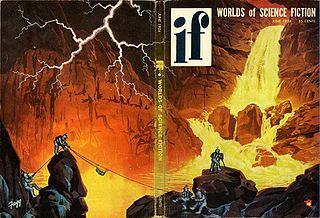
Fictional depictions of Mercury, the innermost planet of the Solar System, have gone through three distinct phases. Before much was known about the planet, it received scant attention. Later, when it was incorrectly believed that it was tidally locked with the Sun creating a permanent dayside and nightside, stories mainly focused on the conditions of the two sides and the narrow region of permanent twilight between. Since that misconception was dispelled in the 1960s, the planet has again received less attention from fiction writers, and stories have largely concentrated on the harsh environmental conditions that come from the planet's proximity to the Sun.

Jupiter, the largest planet in the Solar System, has appeared in works of fiction across several centuries. The way the planet has been depicted has evolved as more has become known about its composition; it was initially portrayed as being entirely solid, later as having a high-pressure atmosphere with a solid surface underneath, and finally as being entirely gaseous. It was a popular setting during the pulp era of science fiction. Life on the planet has variously been depicted as identical to humans, larger versions of humans, and non-human. Non-human life on Jupiter has been portrayed as primitive in some works and more advanced than humans in others.

Saturn has made appearances in fiction since the 1752 novel Micromégas by Voltaire. In the earliest depictions, it was portrayed as having a solid surface rather than its actual gaseous composition. In many of these works, the planet is inhabited by aliens that are usually portrayed as being more advanced than humans. In modern science fiction, the Saturnian atmosphere sometimes hosts floating settlements. The planet is occasionally visited by humans and its rings are sometimes mined for resources.

Pluto has appeared in fiction as a setting since shortly after its 1930 discovery, albeit infrequently. It was initially comparatively popular as it was newly discovered and thought to be the outermost object of the Solar System and made more fictional appearances than either Uranus or Neptune, though still far fewer than other planets. Alien life, sometimes intelligent life and occasionally an entire ecosphere, is a common motif in fictional depictions of Pluto. Human settlement appears only sporadically, but it is often either the starting or finishing point for a tour of the Solar System. It has variously been depicted as an originally extrasolar planet, the remnants of a destroyed planet, or entirely artificial. Its moon Charon has also appeared in a handful of works.

Asteroids have appeared in fiction since at least the late 1800s, the first one—Ceres—having been discovered in 1801. They were initially only used infrequently as writers preferred the planets as settings. The once-popular Phaëton hypothesis, which states that the asteroid belt consists of the remnants of the former fifth planet that existed in an orbit between Mars and Jupiter before somehow being destroyed, has been a recurring theme with various explanations for the planet's destruction proposed. This hypothetical former planet is in science fiction often called "Bodia" in reference to Johann Elert Bode, for whom the since-discredited Titius–Bode law that predicts the planet's existence is named.

Neptune has appeared in fiction since shortly after its 1846 discovery, albeit infrequently. It initially made appearances indirectly—e.g. through its inhabitants—rather than as a setting. The earliest stories set on Neptune itself portrayed it as a rocky planet rather than as having its actual gaseous composition; later works rectified this error. Extraterrestrial life on Neptune is uncommon in fiction, though the exceptions have ranged from humanoids to gaseous lifeforms. Neptune's largest moon Triton has also appeared in fiction, especially in the late 20th century onwards.

Uranus has been used as a setting in works of fiction since shortly after its 1781 discovery, albeit infrequently. The earliest depictions portrayed it as having a solid surface, whereas later stories portrayed it more accurately as a gaseous planet. Its moons have also appeared in a handful of works. Both the planet and its moons have experienced a slight trend of increased representation in fiction over time.
The fictional portrayal of the Solar System has often included planets, moons, and other celestial objects which do not actually exist. Some of these objects were, at one time, seriously considered as hypothetical planets which were either thought to have been observed, or were hypothesized to be orbiting the Sun in order to explain certain celestial phenomena. Often such objects continued to be used in literature long after the hypotheses upon which they were based had been abandoned.
Planets outside of the Solar System have been featured as settings in works of fiction. Most of these fictional planets do not vary significantly from the Earth. Exceptions include planets with sentience, planets without stars, and planets in multiple-star systems where the orbital mechanics can lead to exotic day–night or seasonal cycles.

The Tunguska event—an enormous explosion in a remote region of Siberia on 30 June 1908—has appeared in many works of fiction.
Black holes, objects whose gravity is so strong that nothing including light can escape them, have been depicted in fiction since before the term was coined by John Archibald Wheeler in the late 1960s. Black holes have been depicted with varying degrees of accuracy to the scientific understanding of them. Because what lies beyond the event horizon is unknown and by definition unobservable from outside, authors have been free to employ artistic license when depicting the interiors of black holes.
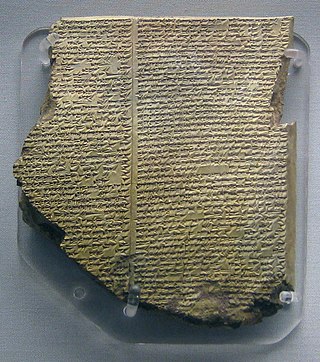
Immortality is a common theme in fiction. The concept has been depicted since the Epic of Gilgamesh, the oldest known work of fiction. Originally appearing in the domain of mythology, it has later become a recurring element in the genres of horror, science fiction, and fantasy. For most of literary history, the dominant perspective has been that the desire for immortality is misguided, albeit strong; among the posited drawbacks are ennui, loneliness, and social stagnation. This view was challenged in the 20th century by writers such as George Bernard Shaw and Roger Zelazny. Immortality is commonly obtained either from supernatural entities or objects such as the Fountain of Youth or through biological or technological means such as brain transplants.

Supernovae, extremely powerful explosions of stars, have been featured in works of fiction since at least the early 1900s.
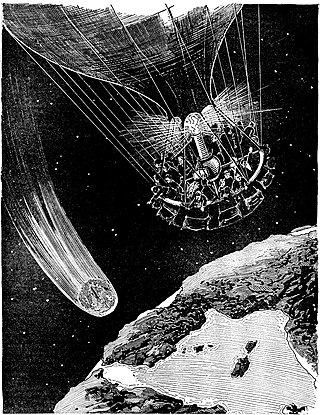
Comets have appeared in works of fiction since at least the 1830s. They primarily appear in science fiction as literal objects, but also make occasional symbolical appearances in other genres. In keeping with their traditional cultural associations as omens, they often threaten destruction to Earth. This commonly comes in the form of looming impact events, and occasionally through more novel means such as affecting Earth's atmosphere in different ways. In other stories, humans seek out and visit comets for purposes of research or resource extraction. Comets are inhabited by various forms of life ranging from microbes to vampires in different depictions, and are themselves living beings in some stories.

Starship Through Space is a science-fiction novel written by G. Harry Stine under the pseudonym Lee Correy. It was published in 1954 by Henry Holt and Company. The book tells the story of the building of the first starship and of its flight to Alpha Centauri.
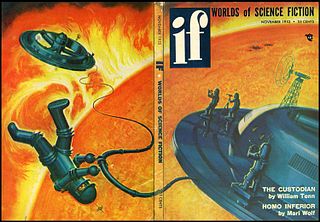
The Sun has appeared as a setting in fiction at least since classical antiquity, but for a long time it received relatively sporadic attention. Many of the early depictions viewed it as an essentially Earth-like and thus potentially habitable body—a once-common belief about celestial objects in general known as the plurality of worlds—and depicted various kinds of solar inhabitants. As more became known about the Sun through advances in astronomy, in particular its temperature, solar inhabitants fell out of favour save for the occasional more exotic alien lifeforms. Instead, many stories focused on the eventual death of the Sun and the havoc it would wreak upon life on Earth. Before it was understood that the Sun is powered by nuclear fusion, the prevailing assumption among writers was that combustion was the source of its heat and light, and it was expected to run out of fuel relatively soon. Even after the true source of the Sun's energy was determined in the 1920s, the dimming or extinction of the Sun remained a recurring theme in disaster stories, with occasional attempts at averting disaster by reigniting the Sun. Another common way for the Sun to cause destruction is by exploding, and other mechanisms such as solar flares also appear on occasion.

Impact events have been a recurring theme in fiction since the 1800s.
The first great science-fiction story in which Alpha Centauri played a major role may have been a 1944 tale by A. E. van Vogt. I read it in a much later anthology when I was a kid. The title of the tale—including the sound of that title—was what really filled me with admiration and has stuck with me ever since: "Far Centaurus." Although the name Proxima Centauri basically means "near Centaurus," the title of the story is appropriate because the tale tells of a first spaceship journey that would take many generations to complete—"'Tis for far Centaurus we sail!"
Alpha Centauri (1997), in which terrorists plague the colony ship which is humankind's last hope